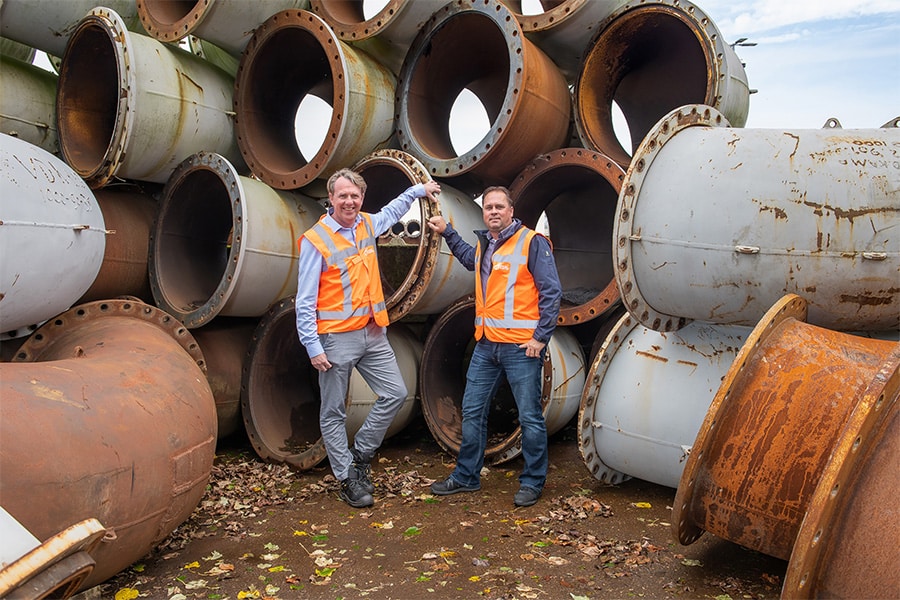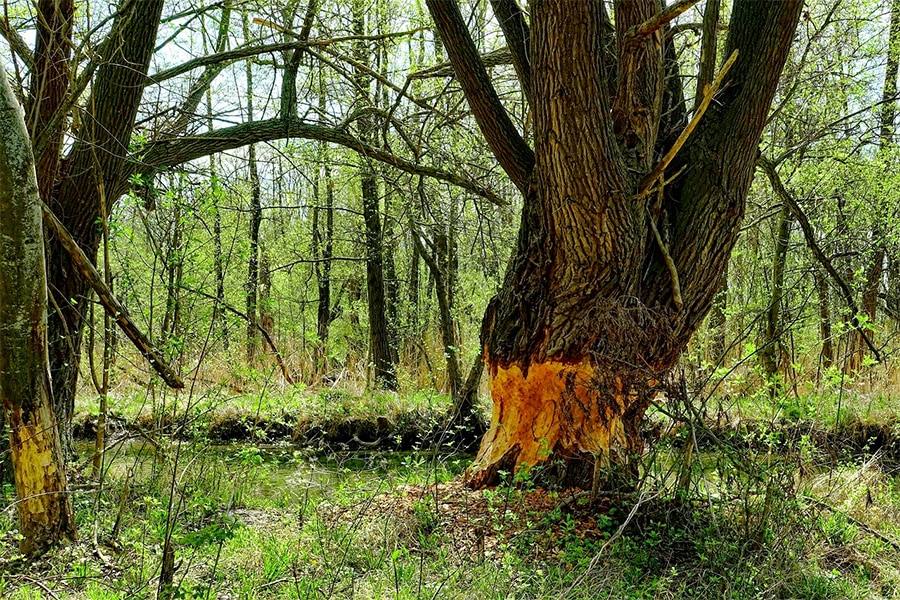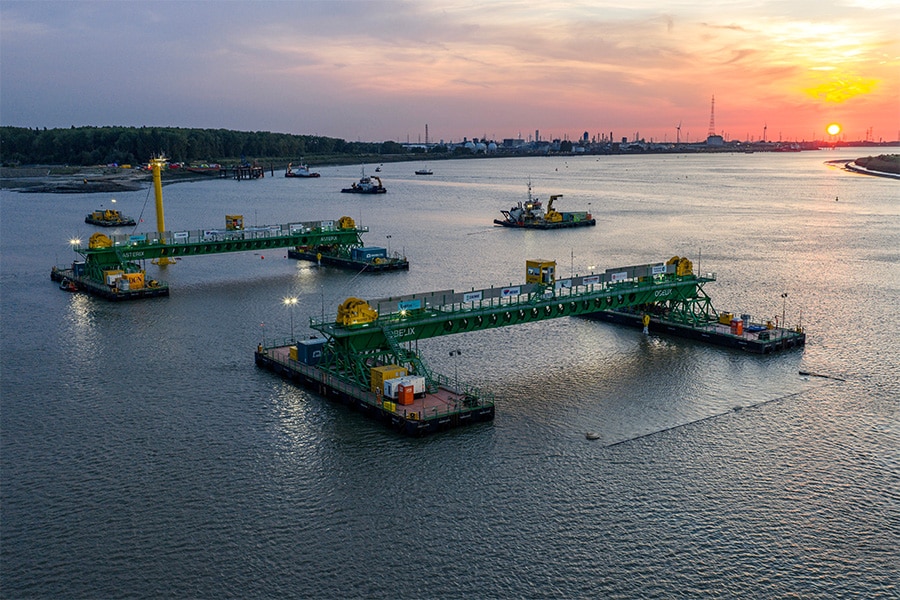
Processing 350,000 cubic meters of concrete for the New Lock in Terneuzen
The mobile concrete plants were already assembled in Terneuzen in July 2018, with effective deliveries beginning in November of that year. Responsible for the delivery of all concrete for the New Lock in Terneuzen is De Rycke Beton BV, specialists in concrete works. Rudy De Baets, Nieuwe Sluis project leader at De Rycke, takes us through the process.
"Sassevaart has the concrete delivered to the site by us via mobile concrete plants," De Baets opens the conversation. "That saves an enormous amount of transport costs and works more sustainably, we only have to drive 500 meters. The raw materials are delivered by ship. We made the first concrete deliveries in November 2018, deliveries for the diaphragm walls began in March 2019."
Deep wall mixture subjected to testing
"For the diaphragm walls, different mixtures were tested. With the 'winning' mixture, 125 diaphragm walls were poured, each evening approximately 550 m3 per diaphragm wall realized. In total we are talking about approximately 1 km of diaphragm wall for the lock, this work will be completed by the end of January 2020," explains De Baets. "The result is worth it, we not only think so, but it has been confirmed to us by various parties."

The new challenge: lightweight concrete for bottom gratings
The next challenge quickly presented itself: the supply of special lightweight concrete, for the construction of the bottom gratings. De Baets: "These were built in a temporary dry dock in the gully. The concrete has a density of 2080 kg/m3, where it normally has a density of 2,300 kg/m3 has. This was necessary for the bottom gratings to float so that they could be towed to site flawlessly before sinking." Many laboratory and production tests were also conducted for the lightweight concrete, De Baets knows.
Underwater concrete
The third special concrete application for which De Rycke has provided is underwater concrete. "In August 2020, 11,000 m3 underwater concrete started the construction of the outer abutment. At the end of November 2020, it was the inner abutment's turn, with 12,500 m3 underwater concrete that we produced continuously in 72 hours." Sassevaart had a special requirement that already after six days the final strength (37 N/mm2) of the poured concrete would be reached. "Normally you don't reach that until 28 days," De Baets explains. "So that involved another nice bit of specialism. Another challenge was to keep the concrete fluid enough to 'survive' a pipe 125 meters long and still be workable at a depth of 22 meters."
De Rycke often works on site, close to the customer, we hear. "For this purpose, among others, we have a floating concrete plant with our BONTON; ideal for construction sites close to a waterway. This allows us to save a large proportion of concrete transport by axle, so that we can reduce CO2-emissions. De Rycke also operates KOMO-certified on all its mobile power plants," De Baets said.




